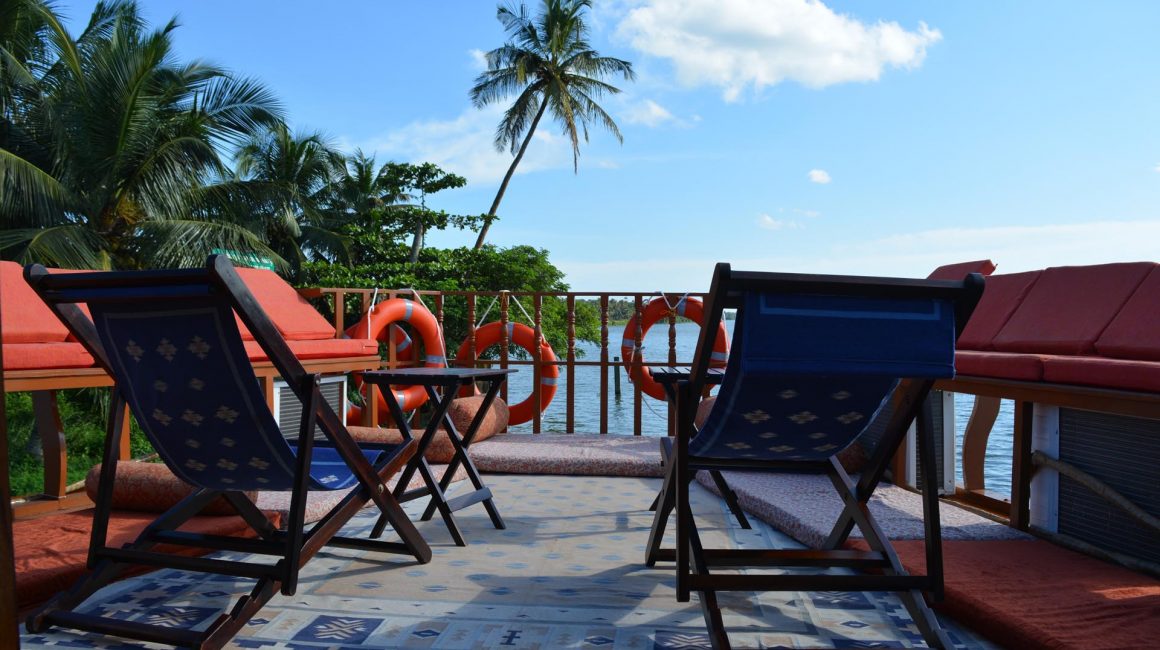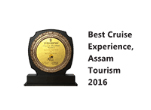Kathakali, the 400years old traditional performing art of Kerala is an aesthetic combination of dance, theatre, music percussion.
Kathakali plays the stories from the Indian epics Ramayana and Mahabharata. There are around 200 characters in Kathakali repertoire, symbolising the mythological worlds: heaven, earth and netherworld. The distinctiveness of the larger-than-life characters of these 3 worlds are represented by distinct make-up and costumes, based on the qualities of them. The three types of qualities in these characters are classified as nobleness, aggressiveness and wickedness. Within this framework of characters, they are further grouped as pious, aggressive/villain, pious yet aggressive, wicked, female/brahmin, demoness and miscellaneous types. The make-up and costume have the significant role of indicating the class and type of each character of the play, as it is the enactment of the story through facial expressions and hand-gestures and movement of eyes.
Kathakali characters
1. Pacha: green face- indicates noble roles such as:
Krishna, Karna, Indra, Pandavas-the 5 mighty brothers of Mahabharata, Nala, Bahuka, Pushkara, Rituparna of Nalacharitham, and Rama, Lakshmana, Bharatha Lav, Kush, Vibheeshana, Sugreeva of Ramayana.
2. Kathi: knife shaped drawing on the face indicates aggressive role.
Kathi is of 2 types. Karum Kathi represents characters like Ravana Dhuryodhana, Keechaka and Narakasura. Netum Kathi represent less aggressive roles of Akambanam, Kumbhakarna, Dwaapara, Kirmeera.
3. Thati: beard
Characters wearing red beard represent villainous characters like Bakan, Bali and Narakasura.
White beard, with round head gear and green daub on the nose, represents the Hanuman-the monkey God.
Even though Hanuman is not villainous in nature, being a monkey by birth, his role is classified as Thati type. Nandikeshwaran, the gate keeper of Lord Shiva, is represented by the same attire as that of Hanuman, with yellow daub on the nose.
Black beard indicates the role of Kattala (forest dweller) of Nalacharitham and Kiratham.
4. Radiant facial (Minukku) represents the roles of Brahmins, messengers, charioteers, and female characters, other than demonesses.
Some of the characters playing female role make artistic drawings in white on cheeks.
Significant male characters in Radiant facial are: the Brahmins wearing dhothi, the messengers and the henchmen wearing voluminous skirt, the saints wearing headgear and beard of red or white colour, and the miscellaneous characters such as carpenters and mahouts.
5. Kari
This type of role represents demonesses.
6. Pazhukka
This type of make-up with yellow colour represents noble yet aggressive characters such as Shiva, Agni and Balabhadra.
7. Miscellaneous type
The characters other than those mentioned before are classified under this type.
Mythological mighty birds, serpents, Narasimha (Half-man half lion), old women, Goddess Kali, comic characters etc., are a few of the characters of this category. The head gear, facial or costume or, in certain types, all these are different from that of characters other categories.
Chutti – Kathakali Costuming
The art of transforming an actor into a character with the help of make-up and costume is an art by itself. It takes around 4-5hours to transform a person in to a character of a play.
3 Stages of costuming:
- The drawing of the Chutti appropriate for each character
- Cutting and fixing of the chutti
- The art of making up the role.
The Chuttikkaran must be inherently talented or trained by experts in drawing and painting the Chutti and in fixing it artistically along the chin of the actor, using an organic paste of rice and lime in 3:1 ratio, cotton and organic make-up glue. This task takes 90-150minutes.
Pacha, Kathi, Pazhuppu, Chuvannathati, vellathadi, karuthathati and Narasimha have Chutti, whereas, Kari, Kritya and Minukku roles do not need it.
The Pettikkaran is the custodian of the costumes. He helps the actor to wear the voluminous skirt and the decorations. Also, he has expertise in holding the curtain for the Tiranottam-the initiation of the performance.
The costumes (Koppu) include headgear, bangles and the other decorations.
These bangles are made of a soft light wood of medicinal value.
The making of the costumes itself is a traditional craftmanship. Vellinezhi village in Palakkad, Kerala, is home to the currently available few professional costume makers.
The make-up artists (Chuttikkaran and the Pettikkaran) need around 4-5hours for transforming the ordinary person to the super human heroes and anti-heroes of the Hindu epics.
The Pettikkaran carries around 50pieces of clothes and jewellery, weighing around 35 kilograms, which have to be tied upon the actors, based on their roles in the play.
There is an old local saying that, for the making-up of a Kathakali character one needs a range of materials right from the sky through beneath the ground, as these include the spathe of tall areca palms, leaves and stones on the ground and the roots of plants. The saying about costuming is that 64 knots are needed to tie the costume tightly and neatly upon the body, and 2 insertions are needed for ear decorations, so as to set the actor ready to play a role.
To enhance the clarity of the hand gestures, the fingers are adorned with steel nails.
Kathakali – Facial Expression
Red and Green along with white, black, yellow and blue are the colours being used in make-up and costuming.
A typical Kathakali face is painted in green, with captivating white borders (Chutti) to highlight minute emotions.
Eyes are reddened putting inside the dried ovule of the flower of Solanum pubescence.
To projecting minute emotions, thick layer of soot is applied around the eyes. The soot is prepared using Poovamkurunnila (Cyanthillium Cinereum), a plant- one among 10 sacred plants, Aavanakenna (castor oil), Gingelly oil and camphor.
The ingredients used for make-up are organic arsenic bisulphate, indigo, vermillion and collyrium.
For the facials of roles of females, brahmins, saints, the yellow paste is prepared by mixing manayola (bisulphate of arsenic) with water. For the other characters, manayola, vermillion and collyrium are mixed with coconut oil.
For more Vignettes of Kathakali, do Cruise with us on RV Vaikundam for 5 or 7Nights, when you get the opportunity to visit Kalashakthi school of Arts in the ancient pilgrim town, Vaikom, alongside the majestic Vembanad lake. In Kottayam. Mr. Sunil Pallippuram, the Kathakali exponent and his wife Mrs. Lakshmi, French, a renowned Indian classical dancer as well as actor, have started the school to promote the classical performances among the local people.
Sangam-Krishnam yam and Rahasya are the latest creations of Kalashakthi school.
How does one experience Kathakali, the 400years old traditional performing art of Kerala?

RV Vaikundam offers an expedition form of cruising on the Backwaters of Kerala. RV Vaikundam is a 9 cabin (1 Deluxe Cabins and 8 Superior cabins) motor vessel offering a seven-night eight-day rendezvous, from October to April.
The 7 night North-South Itinerary from starts at Kochi and ends in Alleppey in the State of Kerala, while the 7 night South-North Itinerary starts from Alleppey to Kochi in the State of Kerala. Airport connectivity is available at Kochi. All inclusive price starts from USD 250* per person per night for base category cabins. *Terms and conditions apply.
The Itinerary is subject to weather and river conditions or if we are faced with any political challenges. The tourism season is from October to April.





















Leave a Reply
You must be logged in to post a comment.